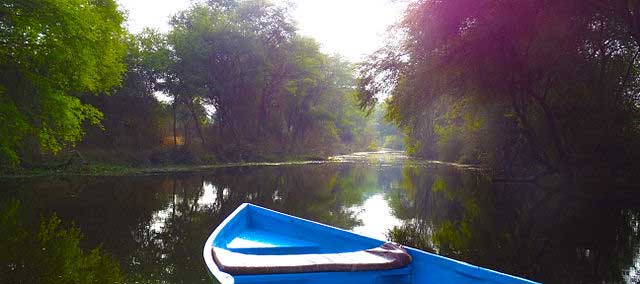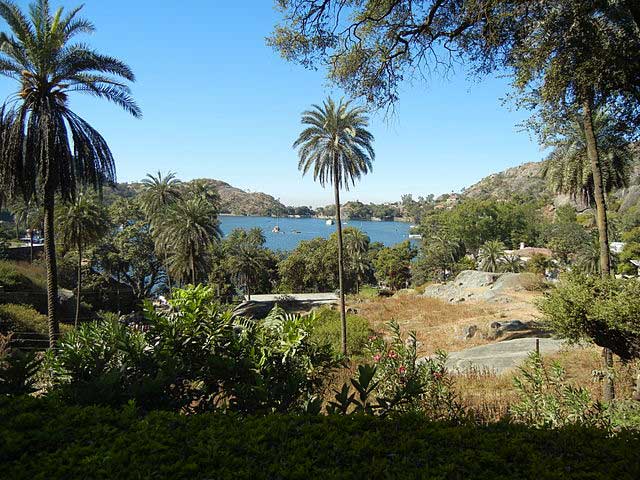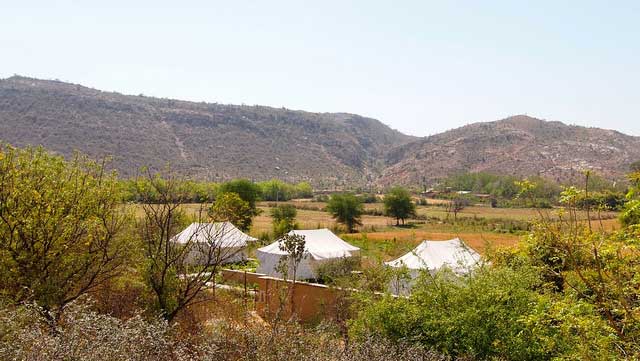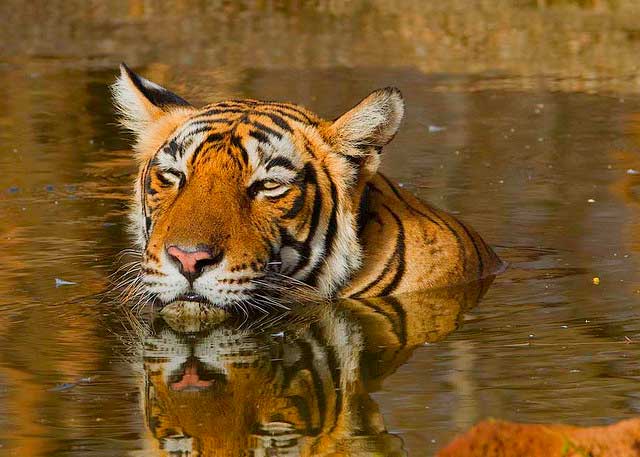The desert state of India, Rajasthan ironically is very vibrant with its fauna. Also known as the land of kings, Rajasthan offers spacious environs for the wild to roam around carelessly in their natural habitat. Offering a large diversity in the landscape, the state makes it easy for its ecosystem to survive together in the extremes. Ranging from the dry arid lands to lush green swamps, the state colors itself with the hues of its inhabitants. With such a variation in the land the place offers brims with an unmatchable biodiversity. The flora of Rajasthan also experiences a huge contrast because of the contrasting feature of the region. Enlisted here are top five wildlife habitats in Rajasthan that should be visited once in a life time to experience the wild first hand.
1. Ranthambore National Park
Enclosed in an area of about 392 sq km in the Sawai Madhopur area of Rajasthan, Ranthambore National Park is one of the essential wildlife habitats of the country. Edging on a plateau, the park lies amid the two rivers of Banas and Chambal to its north and south respectively. Kela Devi Sanctuary and Sawai Man Singh Sanctuary were merged together to form the tiger reserved region and hence the Ranthambore National Park. This park is an abode to the tigers, leopard, chital, sloth bear, hyena, Nilgai and Sambhar. With its deciduous forests, plenty of banyan trees offer their shade to the wilds. The major attraction of the Ranthambore National Park is its jeep safari that lets one explore the wild.
2. Sariska National Park
Declared to be a wildlife reserve in the year 1955 but announced to be a Tiger Reserve in 1978, Sariska National Park lies in the Alwar District of Rajasthan. The first globally successful reserve to relocate and rehabilitate the tigers this national park once flaunted the Royal Tigers of Bengal which then disappeared and were relocated and now can be counted on the finger tips. Other local residents of the park are the Rhesus monkeys, hares, chowsinghaa, Chinkara, Nilgai, striped hyenas, wild boars caracal, golden jackals, jungle cats, sambhar and leopards. Also some beautiful birds including grey partridge, tree pie, bush quail, sand grouse, peafowl, golden backed woodpecker, could be seen chirping here.
3. Keoladeo Ghana Bird Sanctuary

Keoladeo Ghana Bird Sanctuary is globally acclaimed to be the largest one and is the utopia for the bird watchers. The sanctuary is being named after the Keoladeo Temple that lies within the boundaries of the place. Laying close to the town of Bharatpur in Rajasthan it sprawls in an approximate area of 29 sq km. The sanctuary witnesses an ample amount of avian migrations and therefore artificial wetlands have been made and are managed by the forest department. With over 350 variants of birds that reside here over the year, the major ones are Indian Courser, White-tailed Eagles, Indian Spotted Eagles, Black-necked bills, Asian Open bill Storks, Sarus Cranes, Black Bittern, Snipe darters, Large-tailed Darters and Dalmatian Pelicans. The sanctuary could be explored both by the camel safari and the jeep safari.
4. Desert Natural Sanctuary
One of the largest Natural Sanctuaries consisting of 3162 sq km of land, Desert National Sanctuary lies near the Jaisalmer city of Rajasthan. Mainly including the desert region, the place is called the Desert Natural Sanctuary. About one-fifth of its area consists of the sand dunes and hence offers a spectacular abode to animals who are the habitants of the dry and arid regions. Desert fox, Desert Cat, Bengal Fox, Chinkara, wolf and blackbuck are the animals that could be easily sighted here. Also having a colourful avifauna contrasting with the golden sands of the desert the sanctuary also entertains birds like Great Indian Bustard, a highly endangered species that is found only in this region. Apart from that while demoiselle crane, falcons, steppe eagles and Houbara bustard are also sighted.
5. Mount Abu Sanctuary

Nestled in the Aravali Range of Mountains, Mount Abu Sanctuary varies in the altitudes that range from 300 meters to 1722 meters as the highest peak. With such an elevation it makes the animals comfortable to roam carelessly in the nature and also homes flora that sprawl across the hill slope abundantly. Housing animals like leopard, jungle cat, jackal, hyena, Indian Fox and porcupine, the sanctuary is known for residing the rare grey jungle fowl. It also witnesses some beautiful varieties of orchids and wild roses.
With such a biodiversity that is encompassed in Rajasthan the wildlife here is abundant and truly secure in all forms. Boasting about avian fauna and some of the most camera friendly tigers, Rajasthan is one of the best lands to experience wildlife closely.



